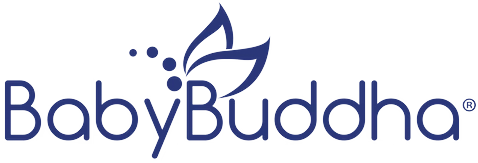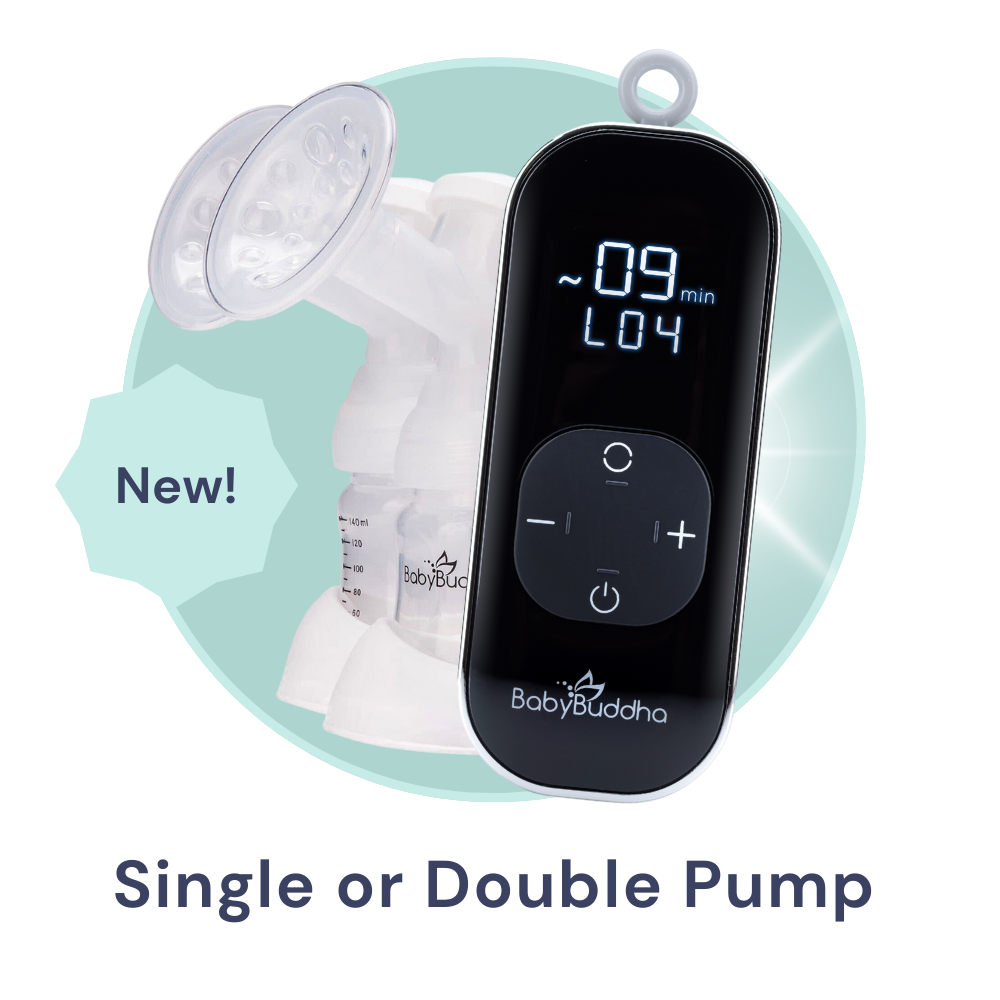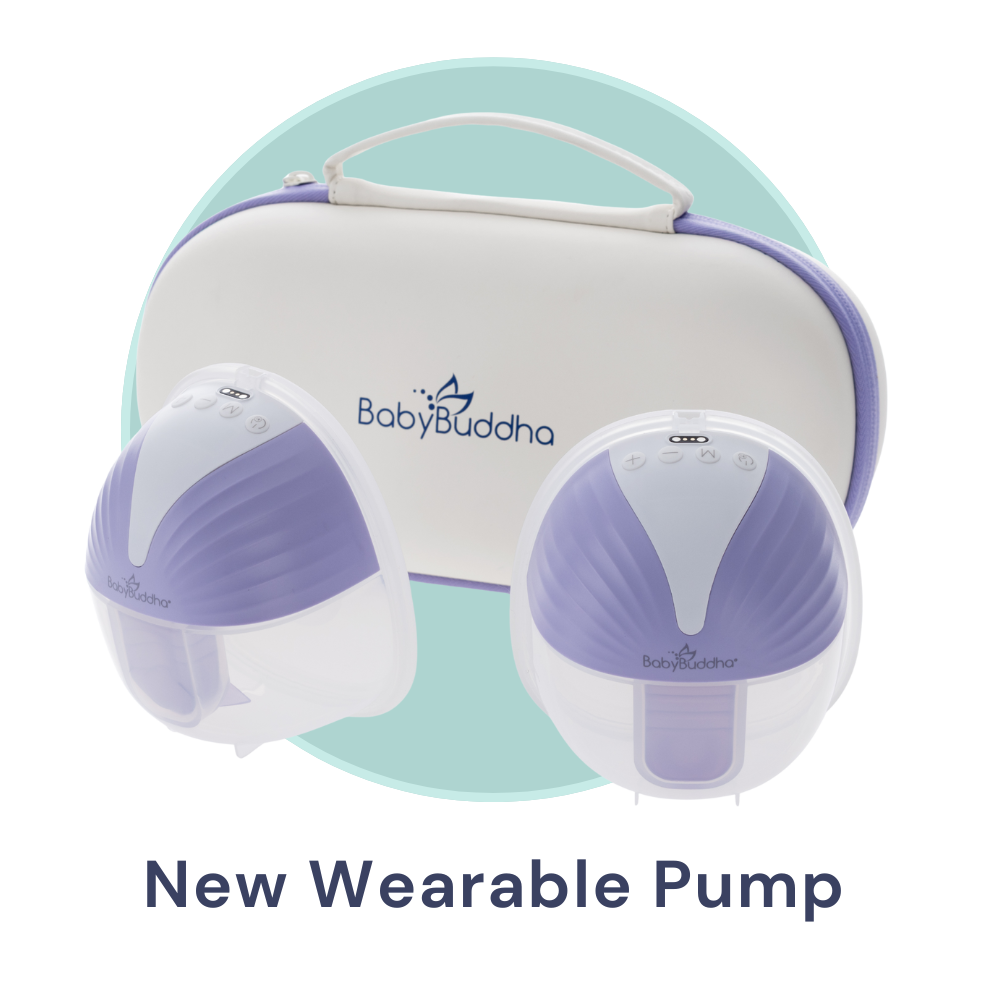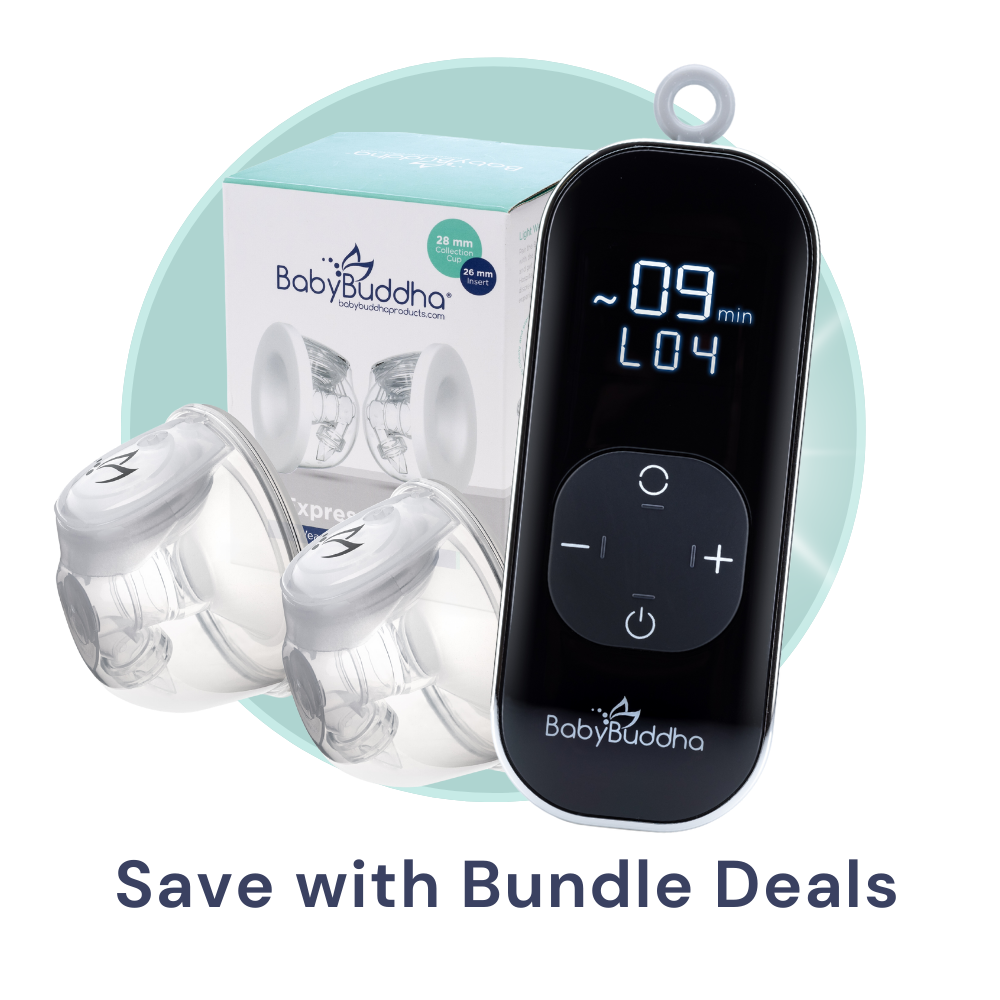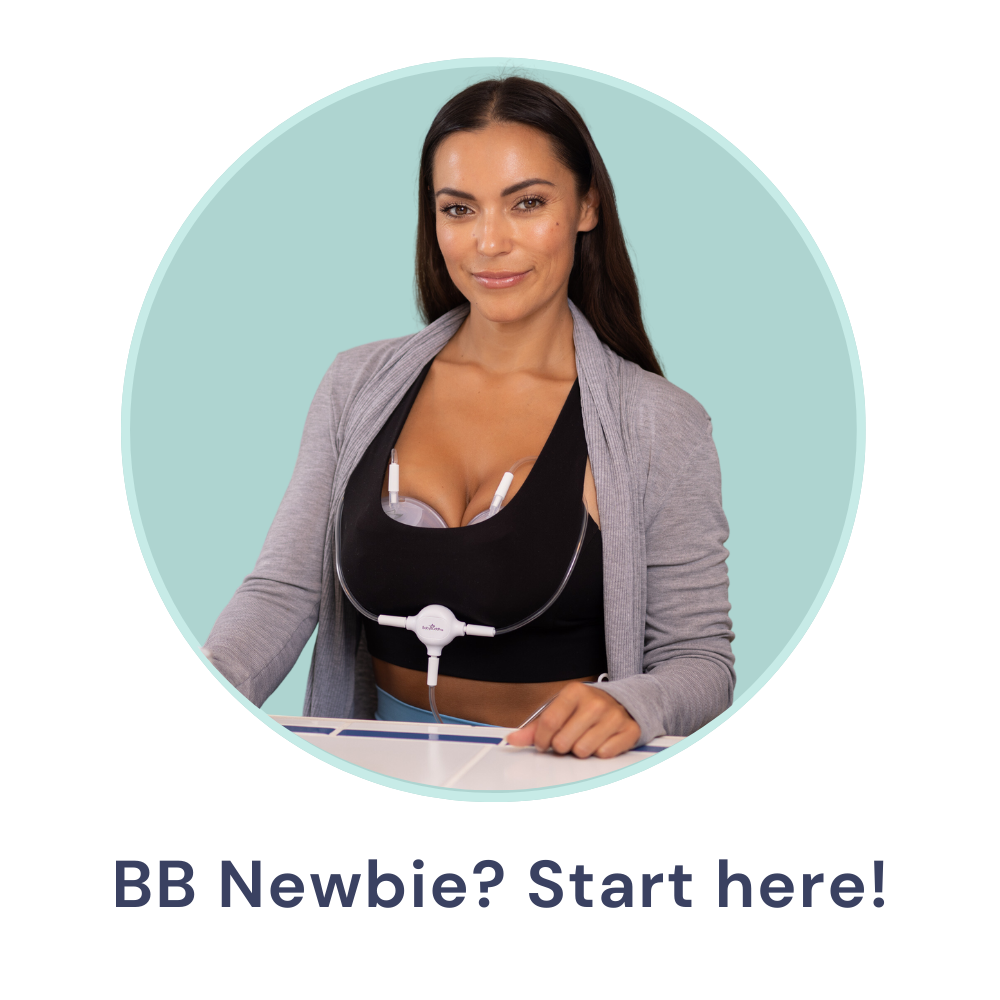Medically Reviewed By | Dr. Hope Lima, PhD, RDN, LRD, IBCLC
It’s often said that being a mom expands your brain power because there are so many more things a mom has to learn about. From infant nutrition to safe sleep practices to what night light your baby likes best, moms know it all.
When choosing to pump, moms also have to become experts on breast pump suction. Did you know there are several levels to breast pump suction settings? Getting them right is very important to the success of your pumping and breastfeeding journey.
Read on as we break it down for you in a way that makes it make sense. We’ll talk you through how to understand these suction levels, get your milk flowing, and boost your milk supply. You deserve to feel accomplished and empowered at the end of a pumping session, and we’re here to help.
Basics of Breast Pump Suction Settings
Before diving into how to determine the best suction settings and levels for you, we first need to talk about the basics of breast pump suction settings.
Measuring Pressure: mmHg (Millimeters of Mercury)
One of the key terms you will often see when researching which is the best breast pump for you is mmHg. This stands for millimeters of mercury and is the standard unit for measuring pressure. Concerning a breast pump, this setting relays how powerful the suction on your pump is. Hint: A pump with adjustable suction will help you find your optimal settings — unlike sun hats, breast pumps are rarely one size fits all.
In general, there are two levels of electric breast pumps in terms of suction strength:
- Hospital-Grade Pumps: These are strong suction and higher quality pumps that are generally covered by insurance. Hospital-grade pumps will typically have a max of 300-350 mmHg. Hospital-grade pumps have a reputation for being heavy (but we think they can be just as portable as personal-use pumps).
- Personal-Use Pumps: These types of pumps typically have a max of anywhere from 240 mmHg to 300 mmHg, depending on the brand. They might not be covered by insurance.
While these are the two basic levels of breast pumps in regards to mmHg, there are pumps like the BabyBuddha Single or Double Electric Breast Pump that fall into both categories. While it’s a personal pump that you can use and access at home, it has a max of 320 mmHg, which is hospital-grade strength. Because of that, your insurance might cover it after you fill out the right benefits forms.
Speed or Frequency
Another setting you’ll likely see on many breast pumps is speed or frequency. This measures how many times a minute the pump is suctioning your nipple area to express breast milk. It works in tandem with the suction power to mimic how a baby typically nurses directly on the breast.
Some breast pumps allow you to manually adjust the speed, while others adjust it automatically based on the suction setting that you’re using.
Two Breast Pump Modes

Most breast pumps come with two modes that simulate nursing. These settings help encourage letdown and maximum milk expression.
Here is a little more about each of these modes:
Stimulation or Massage Mode
The name of this mode varies based on different brands, but regardless of the name, this is the first mode you want to use. This pump set mode mimics how a baby would start a breastfeeding session.
When a baby first latches onto their mom’s breast, they begin suckling at a higher rate of speed, but they are not sucking as deep. They do this naturally to signal to mom’s breasts, “I’m hungry! Give me milk!” This can be mimicked in stimulation mode by setting your pump to a high-speed but low-suction setting.
This stimulates the nerves in your breast and produces oxytocin, also known as the love hormone. Oxytocin is the hormone that signals breast tissue to release milk down into your milk ducts. This release is called a letdown and sometimes can cause you to feel a pins and needles sensation in your breast, but this is exactly what this suction mode is trying to achieve!
Expression Mode
Expression mode is the other mode found on almost every breast pump on the market. This is the mode that you want to switch to after you have had your letdown. Once letdown is achieved, a nursing newborn will change their sucking pattern. At this point, the baby will start sucking at a lower rate of speed, but their suction will be much deeper.
Similar to the switch in the newborn sucking pattern, when in expression mode, pump settings are at a lower speed but at a higher level of suction. Switching to this suction pattern usually allows more time to collect breast milk in the pump. This is typically where you will see more milk drawn from your breasts and where you’ll most likely achieve maximum flow.
How To Find Your Perfect Pumping Settings
Like many other things with motherhood, the best pumping settings will differ for everyone. Here are some tips and advice to help you find the optimal settings:
Trial and Error
Perfecting your pumping settings will probably be a bit of trial and error at first. If you didn’t get the results you wanted the first time around, try adjusting the settings the next pumping session.
Some women need longer in stimulation or massage mode than others do; it all depends on how long your body takes to achieve a letdown. Once you have letdown, figuring out the proper expression mode settings to allow for maximum milk production is your next step.
Some new moms believe that the higher the suction, the more milk will be expressed, but this isn’t always true. Your pump shouldn’t be on such a high suction setting that it causes discomfort. If your pump is too high and causes you pain, it can actually inhibit overall milk production.
One way to go about finding the best suction setting for you is to put the suction up until it’s a tiny bit uncomfortable and then bring it back down by one or two notches. You can play around with these settings until you find the best ones.
Your Settings May Be Different Each Pumping Session
One of the wonders of lactation is how different things can be from day to day. This means that your breast pump settings may need to be changed from one day to the next or from one pumping session to the next.
An example of this is that most women tend to produce more breast milk in the morning versus the evening. Your settings will likely have to look slightly different during your first pump of the day from how they will look during your last pump of the day.
Switch Between Modes
Another thing you can try is to switch between the modes of your breast pump. When a woman is nursing, a baby will switch between their sucking patterns to get the most milk out of their mama. You can repeat this with your breast pump.
After your letdown has finished and you see drops of breast milk instead of a flow, take your breast pump out of expression mode and put it back into stimulation mode. This can sometimes help achieve a second letdown in a pumping session, allowing for more milk to be expressed.
This tip is also good if you are power-pumping. Switching between modes when power pumping is a handy tool to express the most milk during that pumping session and ramp up your overall milk production.
The BabyBuddha Difference

Here at BabyBuddha, we have strived to make a different type of breast pump that suits the needs of moms everywhere yet has the power of a hospital-grade pump.
Wide Range of Settings
The BabyBuddha Portable Breast Pump has a wide range of settings. Our settings are easy to maneuver between with just the swivel of your thumb. Simply use the trackball on your BabyBuddha pump unit, which is smaller than a smartphone and has a rechargeable battery.
Portable Yet Powerful
Our pump is one of the most innovative and portable breast pumps on the market. It can be worn easily in a pumping bra with the unit around your neck. You automatically have the mobility to do whatever you need to do while pumping for your little one.
However, unlike other pumps which sacrifice power for portability, we did not do that. Our team worked hard to create a hospital-grade pump that allows you to achieve hands-free pumping while still getting excellent rates of suction power.
Our closed system design with t-connector tubing keeps your milk from being tainted by backflow so that it’s ready for your baby to drink as soon as your session ends. Your complete breast pump kit has all the pump parts you need to get started, including breast shields and baby bottles. Simply slip on your favorite nursing bra, and you’re good to go!
BabyBuddha wanted to give freedom back to pumping moms, and that’s what the Double Electric Breast Pump does. You can even attach breast milk storage bags to the pump itself with our adapter.
We also have a highly rated manual breast pump for those times that you may need a little extra relief between pumping sessions.
More Than Just Suction
While a pump with strong suction is vital to a successful pumping journey, other things are part of the equation: One of those things is flange sizing.
Flange (or breast shield) sizing can help prevent things like cracked nipples, pain while pumping, and mastitis. Also, if you don’t have a properly fitting flange, you likely won’t express the amount of milk you could with the correct size. Check out our flange fitting guide for more information, and visit our accessories page for a wide range of sizes.
As always, if you have any concerns about the amount of milk you are pumping, please speak with a lactation consultant (IBCLC) (like our consultants at BabyBuddha) or your healthcare provider.
Sources:
Millimeters of Mercury | My Health Alberta
Oxytocin | The Cleveland Clinic
Making Breast Milk | Office on Women’s Health
Breast Milk Is Best | Johns Hopkins Medicine
